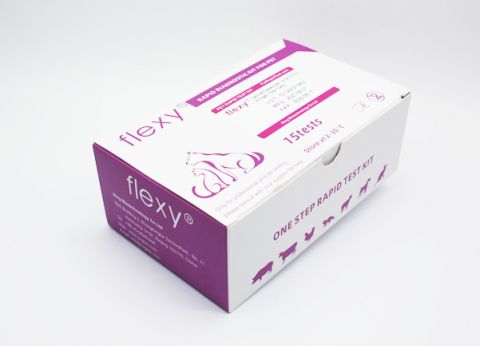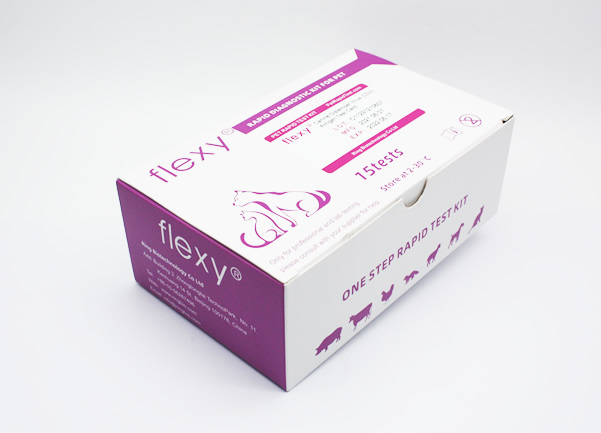
This Feline Calicivirus FCV Ag Rapid Test Kit is based on an immunochromatographic assay to detect FCV Ag in feline saliva, nose swab and eye conjunctive secretion, which is rapid, accurate and easy-to-operate.
Basic information
Feline calicivirus is a highly contagious virus that causes a mild to severe respiratory infection and oral disease in cats. It is especially common in shelters and breeding colonies and often infects young cats. Most cats recover completely after a calicivirus infection, but rare strains can be especially deadly. The virus poses no threat to humans.
Key facts of the Feline Calicivirus FCV Ag Rapid Test Kit
- Ready to use kits for pet owners and vet clinic
- No special instrument required
- Suitable for field test
- Result in 10min.
Feline Calicivirus FCV Ag Rapid Test Kit Box Components
| Item # | Item | Qty |
|---|---|---|
| 1 | Rapid Test Card | 15 pcs |
| 2 | Sample buffer tube | 15 bottles |
| 3 | Plastic pipettes, 0.5ml | 15 pcs |
| 4 | Kit instruction, | 1 set |
What causes calicivirus infection?
Feline calicivirus (FCV) belongs to a large family of viruses named Caliciviridae, whose members infect a wide range of vertebrate animals, including rabbits, livestock, reptiles, birds and amphibians.
Why and how might my cat become infected?
FCV occurs most commonly in multi-cat environments. A cat’s risk of exposure is higher in shelters, pet stores, and catteries, where 25 to 40 percent of cats may be carriers.
The virus spreads through direct contact with the saliva, nasal mucus and eye discharge of infected cats and through aerosol droplets that spread when cats sneeze. Lab tests have also detected the virus in urine, feces and blood. Cats typically shed the virus for about two or three weeks after infection, but some cats become long-term carriers, and continue to shed the virus on and off for months.
FCV is a hardy virus that survives on surfaces for up to a month in certain environments. Humans that handle infected cats can inadvertently transfer the virus to new animals. Objects that come in contact with a cat’s bodily fluids, such as food bowls, litter boxes or bedding, can also be a source of infection.
What happens during infection and how to diagnose it?
After being exposed to FCV, the incubation period is two to 14 days before symptoms appear.
Commercial labs detect the presence of FCV in two ways: by growing the virus in cells in a petri dish, or through reverse transcriptase PCR (RT-PCR), a procedure that detects a segment of genetic material that is specific to calicivirus. Both tests are equally effective, though the RT-PCR test may be more common in some areas, as part of a panel that tests for several organisms that cause respiratory disease.
Test results should be interpreted carefully. Please always follow the advice of the doctor.
Extended reading
- Cornell University, Baker Institute for Animal Health, feline calicivirus webpage.




